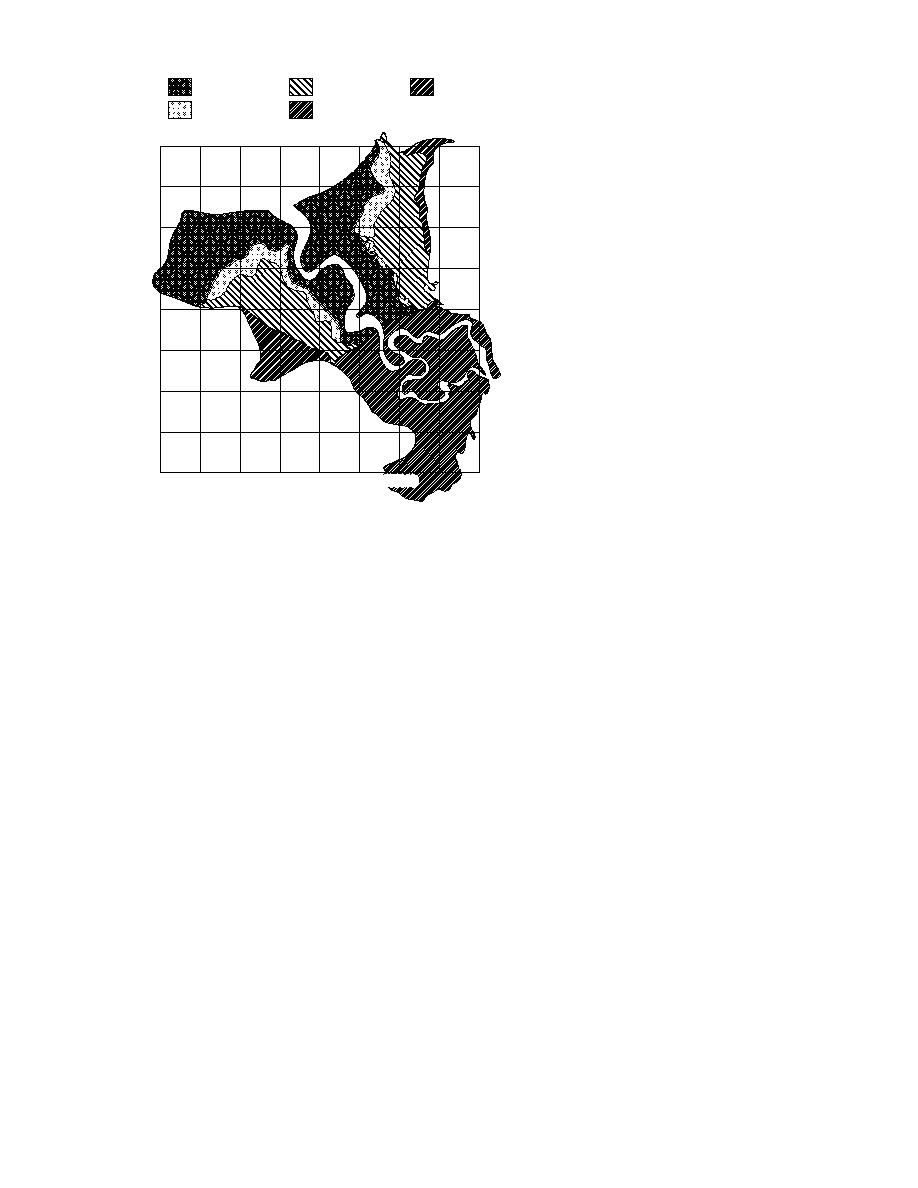
Short-term sediment accumulation is re-
Mudflats
Pond/Marsh
Border
lated to elevation, and thus to the frequency
Sedge Meadow
Sedge Marsh
and depth of inundation and annual sedi-
ment supply, but eustatic rise in sea level
6803000
may be more important to long-term rates
(e.g., Krone 1987; Allen 1990a,b; French
1991, 1993; McLaren et al. 1993; French and
Spencer 1993). The texture and composi-
tion of sediment deposited in tidal flats and
6802000
salt marshes vary in space because of tidal
channels and gullies as well as tidal cur-
rents (e.g., Carling 1982, Allen 1992).
The sediment balance, the accretion or
6801000
erosion of sediment, in tidal flats and salt
marshes has been estimated using short-
term vertical sedimentation rates (e.g.,
Harrison and Bloom 1977, Richard 1978,
Letzch and Frey 1980, Stoddart et al. 1989).
6800000
Longer-term estimates have been made by
dating subsurface horizons (e.g., Hubbard
and Stebbings 1968, Allen and Rae 1988)
and creating radionuclide profiles (e.g.,
6799000
Keene 1971, Bloom 1984, Kearney and Ward
355000
352000
353000
354000
356000
1986). Both estimates, however, may be mis-
leading owing to compaction after deposi-
Figure 3. Distribution of primary landformvegetation units
tion in the former case and time-dependent
(from Racine et al. 1993).
accretion rates in the latter (French 1993).
The initial analyses of ERF sedimenta-
mentation rates. Levees, mudflats, marshes and
tion and erosion (Lawson and Brockett 1993,
shallow ponds (to 50 cm depth) approximately
Lawson et al. 1995) indicate that the forces of
parallel the Eagle River and coastline (Racine et
erosion and deposition are actively changing the
al. 1992a). Freshwater ponds or shrub bogs lie
morphology of the drainage system, ponds and
along the uplands on the northeast and south-
mudflats. Past migration of the Eagle River has
west.
apparently reworked a significant amount of sedi-
ment, as indicated by meander scars and channel
cut-offs (Fig. 4b). Limited sampling during early
BACKGROUND AND
studies has shown that WP-bearing sediments
PREVIOUS STUDIES
from gullies probably move into the Eagle River
during tidal ebb, potentially increasing the acces-
The fundamental sedimentary and hydrologi-
sibility of WP particles to migratory waterfowl,
cal processes of subarctic and arctic tidal flats and
invertebrates, fish or other organisms. We also
salt marshes are not well understood (e.g., Boon
evaluated factors controlling these physical pro-
1975, Frostick and McCave 1979, Carling 1981,
cesses in the tidal flats, but the data are still insuf-
Collins et al. 1987, Dionne 1988, Stoddart et al.
ficient to assess the short- and long-term response.
1989, Reed 1990, Andrew and Cooper 1993). The
Processes of erosion, transport and deposition
roles of glacial rivers and glacial-marine sediment
vary seasonally (Tables 1 to 6). Their importance
discharges in tidal flat and salt marsh sedimen-
may likewise vary across ERF in response to a
tology have received only limited attention
number of internal factors (Table 7). The relation-
(Ovenshine et al. 1976a,b; McCann et al. 1981;
ship of these factors to physical processes are
Bartsch-Winkler and Ovenshine 1984). Neither the
under investigation; our understanding of the pro-
sediment flux nor sediment budget of tidal flats
cess relationships are presented in subsequent sec-
and salt marshes are sufficiently defined to link
tions of this report.
their hydrology and sedimentology (e.g., Frostick
External controls (Table 7) are more difficult to
and McCave 1979, Kohsiek et al. 1981).
define because they are affected by a number of
3



 Previous Page
Previous Page
